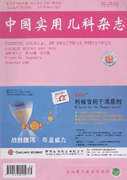Abstract:Objective To establish a real-time fluorescent quantitative PCR assay to detect the human coronavirus NL63 from nasopharyngeal samples of children with acute respiratory tract infections in Fuzhou. Methods The specific primers and Tap-man probes were designed targeting the 1a gene. The aimed fragment of 1a gene was amplified with PCR and ligated into a PMD18-T Easy vector for standards. A total of 151 clinical specimens were subsequently tested after determination of the sensitivity and specificity of the established real-time PCR. Amplify and preliminarily analyse the N gene. Results The specificity of this assay was excellent. The linear amplification of the assay ranged from 101 copies/μL to 1010 copies/μL. Two of 151 clinical specimens(1.3%) were tested positive for HCoV-NL63. Conclusion The real-time fluorescent quantitative PCR assay is successfully established to detect HCoV- NL63 .

